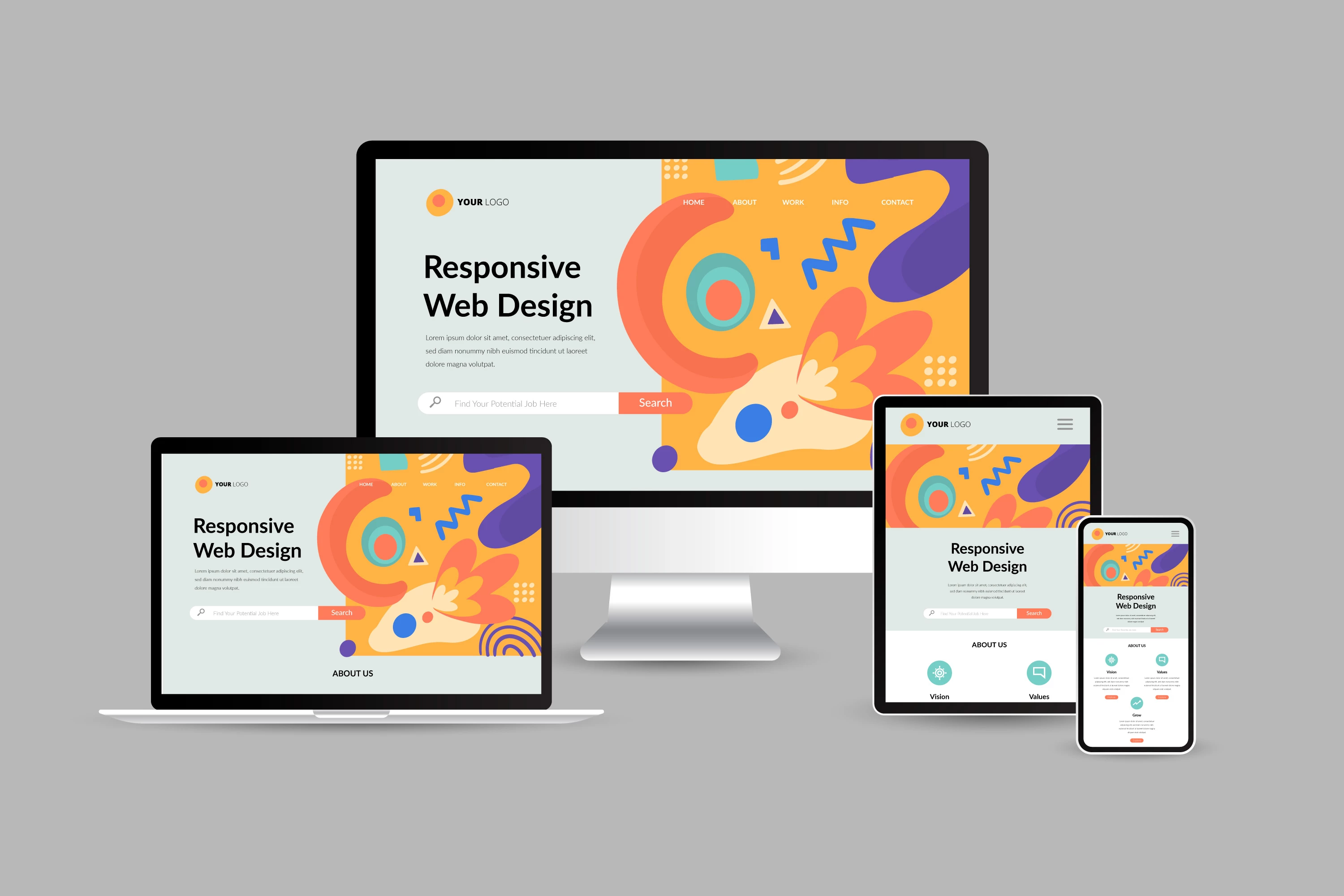Innovative Website Design Solutions for Modern and Engaging Internet Sites
In the realm of web design, the pursuit of modern-day and interesting solutions has become increasingly vital for companies aiming to capture user attention. By integrating bold color schemes, interactive elements, and receptive formats, developers can develop experiences that not just resonate with users but likewise boost brand name identity.
Embracing Bold Color Systems
In website design, the tactical use of bold color schemes can dramatically boost individual interaction and brand identification. By utilizing lively shades, designers can create visually striking websites that record interest and foster a memorable experience. An appropriate color palette not just shows a company's values however likewise evokes details emotions that can influence individual habits.
Bold shades can be utilized to assist individuals' attention to crucial elements such as contact us to activity, enhancing conversion prices. Making use of contrasting colors for switches and links can make these components stand out, triggering customers to communicate even more readily. A natural color plan throughout the site enhances brand recognition, developing a sense of experience and depend on among visitors.
Nevertheless, it is crucial to stabilize bold colors with ample white space to prevent frustrating users. Effective use typography additionally enhances bold colors, making sure readability while maintaining visual charm. Eventually, welcoming vibrant color pattern in web style not only raises visual top quality yet also plays an important duty in attaining critical business objectives, making it a vital factor to consider for modern web development.

Making Use Of Interactive Aspects
Interactive elements are crucial in modern-day web design, as they dramatically improve user involvement and create a much more dynamic surfing experience. By incorporating attributes such as animations, float impacts, and clickable elements, internet sites can encourage customers to explore content better and return for future brows through.

Micro-interactions, such as refined animations when a button is clicked or a kind is submitted, can also enhance the user experience by giving prompt responses. These little details can make the internet site really feel more responsive and to life, promoting a feeling of link in between users and the website.
Furthermore, gamification components, such as rewards for completing details actions, can inspire individuals to engage with the content more deeply. By thoughtfully integrating these interactive components, internet designers can produce a memorable and engaging on the internet experience that resonates with individuals and encourages them to return.
Applying Responsive Style
Implementing responsive layout is crucial in today's multi-device landscape, making certain that internet sites provide an optimal viewing experience across various screen dimensions. As users increasingly access the web with smart devices, tablets, and desktop computers, a one-size-fits-all strategy is no much longer viable. Receptive design permits seamless navigation and communication, adjusting format and content to fit the visit their website tool being used.
Secret concepts of responsive layout consist of liquid grids, adaptable photos, and media inquiries. Media questions facilitate the application of different styles based on the gadget's features, such as size, height, or resolution, enabling developers to tailor the user experience properly.
Additionally, receptive style enhances search engine optimization performance, as internet search engine prefer mobile-friendly websites. By implementing responsive design, businesses not just improve individual complete satisfaction and engagement yet also boost their reach in an affordable electronic landscape. As innovation remains to progress, embracing responsive style has actually ended up being an essential method for any modern and engaging website.
Integrating Multimedia Web Content
Multimedia content plays a vital duty in producing engaging and vibrant internet experiences that catch users' interest and enhance understanding. By incorporating text, images, audio, and video, internet sites can offer a richer story that allures to different finding out designs and preferences. This integration not just bolsters user involvement however additionally help in conveying intricate concepts succinctly.
Including find this high-grade pictures and infographics can separate textual material, making it extra digestible. In a similar way, video tutorials and presentations can give extensive understandings that static content may not completely communicate. Audio components, such as podcasts or history songs, can additionally boost the environment of an internet site, developing a more immersive experience.
Additionally, the critical use multimedia can enhance SEO efficiency, as online search engine favor varied material kinds, enhancing visibility. However, it is essential to make sure that multimedia components do not impede web page load times, as this can result in user aggravation. By balancing multimedia assimilation with efficiency considerations, internet designers can produce aesthetically attractive and useful internet sites that reverberate with customers, promoting a much deeper connection and encouraging return gos to.
Focusing On Individual Experience

To achieve an optimum individual experience, developers should focus on numerous vital principles. Receptive design is vital; websites must adjust seamlessly to numerous devices and screen sizes. This access guarantees that users can involve with material no matter of their picked platform. Quality in design and hierarchy is crucial. Clear contact us to action, readable typography, and organized content guide individuals, lowering cognitive load.
Furthermore, integrating individual feedback into the style procedure is invaluable. Normal screening with genuine individuals aids determine pain factors and locations for renovation, enabling for iterative enhancements. Ultimately, prioritizing UX not only elevates customer contentment but also drives interaction and conversion prices, making it an important component of modern-day internet layout approaches. By placing customers at the facility of design initiatives, internet sites can develop enduring, positive impacts that encourage return brows through.
Verdict
To conclude, modern web layout remedies that emphasize vibrant color design, interactive elements, responsive layout, and multimedia material considerably improve customer involvement and complete satisfaction. Prioritizing customer experience via clear layouts and continual comments This Site even more adds to enhanced conversion prices. By taking on these approaches, internet sites can efficiently captivate site visitors and reinforce brand identity, ultimately leading to a much more vibrant and appealing on the internet visibility. The integration of these design concepts is important for attaining modern-day website design purposes.